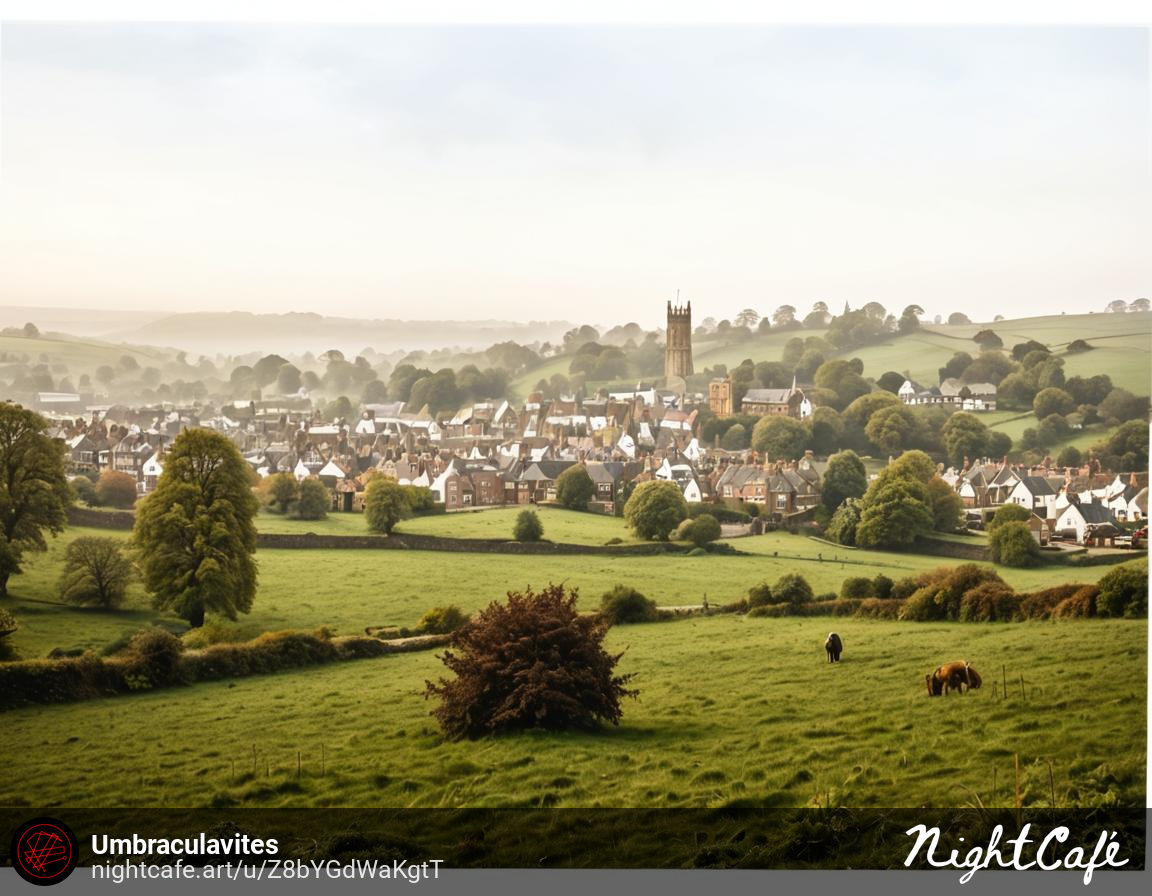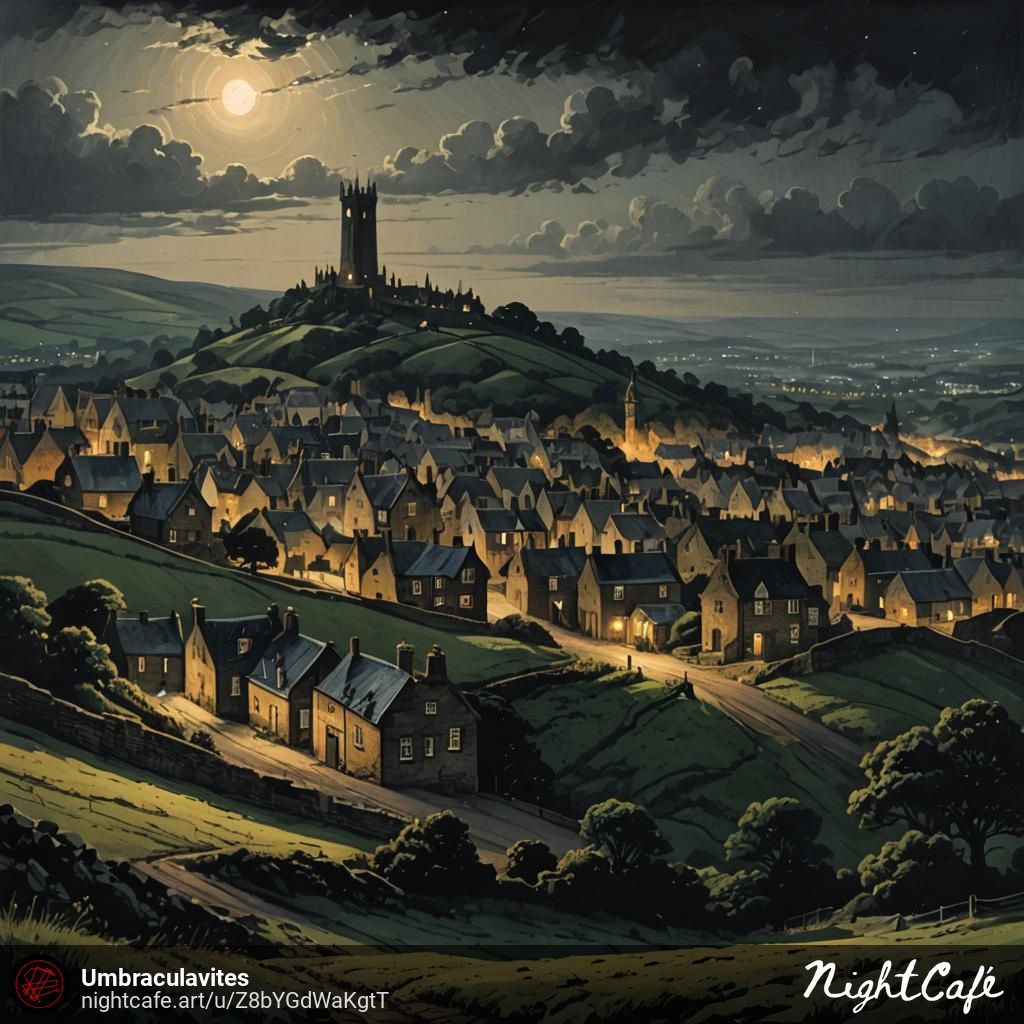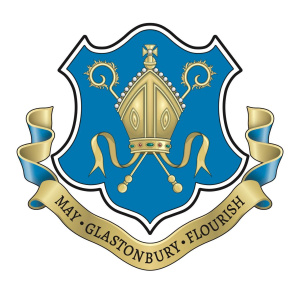Glastonbury
Contents
- 1 Introduction
- 2 Appearance
- 3 City Device
- 4 Climate of Glastonbury
- 5 Demonym
- 6 Economy of Glastonbury
- 7 Geography
- 8 History of Glastonbury
- 9 Population
- 10 Attractions
- 11 Cemeteries
- 12 City Government
- 13 Communications
- 14 Crime
- 15 Citizens
- 16 Current Events
- 17 Fortifications
- 18 Galleries
- 19 Holy Ground
- 20 Hospitals
- 21 Hotels & Hostels
- 22 Landmarks
- 23 Law Enforcement
- 24 Monuments
- 25 Museums
- 26 Newspapers
- 27 Parks
- 28 Pubs and Alehouses
- 29 Residences
- 30 Restaurants
- 31 Ruins
- 32 Schools
- 33 Shopping
- 34 Theaters
- 35 Transportation
- 36 Visitors
- 37 Supernaturals
- 38 Stories
- 39 Websites
Introduction
"In Glastonbury, history, myth and legend combine in such a way that most visitors cannot fail to feel the powerful atmosphere of the town. For not only is Glastonbury the cradle of Christianity in England but is also reputed to be the burial place of King Arthur. Glastonbury is a town steeped in myths and legends. Theories about the founding of the great abbey and connections to the Arthurian legends and the land of Avalon are too numerous to count. The mysterious and sacred aspects of Glastonbury attract visitors and pilgrims from all over the world who seek forgotten lands and wish to drink from sacred springs."
Glastonbury is a town and civil parish in Somerset, England, situated at a dry point on the low-lying Somerset Levels, 23 miles (37 km) south of Bristol. The town had a population of 4,213 in the 1900 census. Glastonbury is less than 1 mile (2 km) across the River Brue from Street, which is far smaller than Glastonbury. It is 139 miles from Glastonbury to London.
Evidence from timber trackways such as the Sweet Track show that the town has been inhabited since Neolithic times. Glastonbury Lake Village was an Iron Age village, close to the old course of the River Brue and Sharpham Park approximately 2 miles (3 km) west of Glastonbury, that dates back to the Bronze Age. Centwine was the first Saxon patron of Glastonbury Abbey, which dominated the town for the next 700 years. One of the most important abbeys in England, it was the site of Edmund Ironside's coronation as King of England in 1016. Many of the oldest surviving buildings in the town, including the Tribunal, George Hotel and Pilgrims' Inn and the Somerset Rural Life Museum, which is based at the site of a 14th-century abbey manor barn, often referred to as a tithe barn, are associated with the abbey. The Church of St John the Baptist dates from the 15th century.
The town became a center for commerce, which led to the construction of the market cross, Glastonbury Canal and the Glastonbury and Street railway station, the largest station on the original Somerset and Dorset Railway. The Brue Valley Living Landscape is a conservation project managed by the Somerset Wildlife Trust and nearby is the Ham Wall National Nature Reserve.
Glastonbury has been described as having a New Age community, and possibly being where New Age beliefs originated at the turn of the twentieth century. It is notable for myths and legends often related to Glastonbury Tor, concerning Joseph of Arimathea, the Holy Grail and King Arthur. Joseph is said to have arrived in Glastonbury and stuck his staff into the ground, when it flowered miraculously into the Glastonbury Thorn. The presence of a landscape zodiac around the town has been suggested but no evidence has been discovered. The Glastonbury Festival, held in the nearby village of Pilton, takes its name from the town.
Appearance
Daytime
Nighttime
City Device
Climate of Glastonbury
Demonym
Economy of Glastonbury
Geography
Districts
- Beckery -- Little Ireland
History of Glastonbury
Population
- -- Glastonbury Town (4,213) - 1900 census
- -- Neighboring Village of Street (3,535) - 1900 census
Attractions
Cemeteries
- Glastonbury Cemetery -- Established: 1854–55
City Government
Glastonbury Town Council
Glastonbury's town council is composed of fifteen men including the mayor. The councilors for the town art drawn from the more elderly, err successful, business men of Glastonbury town. The mayors office and the council's meeting chambers are located inside Glastonbury Town Hall in the heart of old Glastonbury.
- Glastonbury Town Hall
Mayor
Town Council
- Douglas Blythe
- Greyson Dickens
- Jameson Sutton
- Benedict Burton
- Silver Norris
- Lew Edison
- Harding Hedley
- Gregg Roderick
- Henderson Fenwick
- Crew Lewis
- Elliott Marston
- Joe Nicholls
- Harland Addison
- Cary Ware
Law Enforcement
The Glastonbury police force is ten officers strong, they look after four-thousand civilians and usually do so without great difficulty. Padan Grenville is the town's chief constable and a veteran of London's Metropolitan Police. The Chief Constable is supported by Art Owston a local copper with decades of experience policing the more rural locales of Somerset and an expert tracker. There art eight uniformed street constables broken into teams of two who work rotating eight hour shifts. This arrangement means there are three pairs of constables active in a day with one pair off for the day. Patrols that cover the old part of town do so on foot while those covering the outer edges of the town use horses to get about. The Glastonbury constabulary has been stable since Padan Genville took over in 1899 and his men are as solid and even-headed a group of officers as any in the county of Somerset.
Leadership
- Paden Grenville -- Chief Constable
- Art Owston -- Sargent of Constables
Street Constables
- Ned Dean & Rickey Lloyd
- Wade Pemberton & Winton Barrett
- Monte Hathaway & Sterling Jinks
- Mortimer Crisp & Spencer Bonney
The Judiciary
- Matthew Hoyt Maynard -- Parish Judge
Communications
Post
Telegraph
Crime
Crime in Glastonbury is largely petty in its nature: public intoxication, lewd behavior, assault and battery and petty theft make up thr majority of illegal activities likely encountered in Glastonbury and half of all those cases are perpetrated by outsiders visiting the town.
Prostitution
- Lilac House -- A Den of Iniquity
Citizens
Clubs & Fraternities
- Fellowship of Arimathea
- Glastonbury Antiquarian Society
- Royal Society for the Protection of Birds
- The Younglings
Missing Persons
- - Father Bayley Winslow
- - Harold Cory (7yrs old)
Current Events
Fortifications
Galleries
Holy Ground
Hospitals
Hotels & Hostels
Landmarks
- Glastonbury Canal
- Glastonbury Market Cross
- Glastonbury Thorn
- River Brue
Law Enforcement
- Arthur Grady - street bobby
Monuments
Museums
- The Tribunal -- Museum of Iron Age Artifacts
Newspapers
- Somerset County Gazette (1836)
- Mid Somerset Series (1851)
- Western Daily Press (1858)
Parks
Pubs and Alehouses
Three innkeepers, including the tenant of the George, were licensed to sell wine in the town in 1555, and the Hart and the Pelican were named in the 1580s. Seven victuallers were in business in 1620, and in 1630 there were eight alehouses, the limit set by the magistrates in 1636. Among the inns which contributed to the guest beds for 91 and stabling for 45 in 1686 were the Ship, the Bell, the Oak or Royal Oak, the Pelican, and the White Hart in addition to the George and the Crown. In 1695 there were eleven inns, and those named at the beginning of the 18th century included in addition the Holly Bush and the Tavern. The parish vestry thought so many alehouses were 'so many nurseries of indolence and vice' and requested the magistrates to license eleven. Ten alehouses were approved in 1764, seventeen in 1768, and fourteen victuallers in 1786. There were again seventeen licensed houses in the parish in 1866, of which six were unnamed beer houses, and there were twenty-two in 1889 and 1891. In 1905 there were fourteen fully licensed houses, eight beer houses, and a licensed grocer, a license for every 174 people in the parish. As a consequence four licenses were refused, and among those houses closed was the Red Loin, which had occupied the former gatehouse to the abbey precinct.
Taverns
- Blackwoods Tavern
- Market House
- Garlands on High Street
- White Hart
- The Pelican
- The Royal Oak Tavern
- The George
- The Crown
- Three Innkeepers
- The Holy Bush
- The Ship
- The Bell
- The Tavern
- Tor House
- Anchor Inn
- Chalice Well House
- Red Loin (closed 1904)
Residences
Restaurants
Ruins
Schools
In 1839 the two National schools between them had 128 pupils on weekdays and 84 on Sundays and there was an infants' school for 70 supported by a Mrs. Roach and school pence. There were two Independent Sunday schools for 179 children between them and a Wesleyan Sunday school for 50 children. There were also six private schools, three of them described as commercial. In 1847 the National school, named St. John's and St. Benedict's, had 80 boys attending on weekdays and Sundays, 47 girls on both and 70 on Sundays only, and 147 infants. There were then dame schools for 10 boys and 12 girls affiliated to the National Society. The Wesleyans and the Independents had Sunday schools in 1861.
The National school was largely rebuilt in 1864–5; the designs by (Sir) George Gilbert Scott in harmony with those of St. John's church were treated very freely by Frederick Merrick, the builder. A private infants' school was opened at Hill Head, from 1864 until 1877 receiving a grant from Levington's charity. In 1875–6 a new National school was built in Benedict Street. From c. 1884 it shared the charity endowments with St. John's school.
In 1901 there were five elementary schools in the town, including the Wesleyan day school; two years later the two public elementary schools, St. John's and St. Benedict's, came under a joint board of management which itself was under the control of a newly-formed borough sub-committee of the county education committee. In 1903 there were 412 children on the books at St. John's school with an average attendance of 328 children. At St. Benedict's there were 300 on the books and average attendance was 231. St. John's school had 178 boys and 72 infants in 1925.
Shopping
- Langdon's Market -- An Essential Grocer
Theaters
- Abbey Threatre -- current entertainers: Prospero's Players
Transportation
Automobiles
Coach Service
Flat Boats
Train Service
Visitors
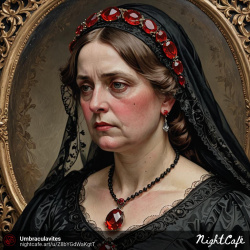 -- Ghislaine Bellefontaine -- A Widowed Matron
-- Ghislaine Bellefontaine -- A Widowed Matron- Eldread Caruthers -- Photography Student
 -- Violet Mary Firth -- A sensitive young girl on holiday
-- Violet Mary Firth -- A sensitive young girl on holiday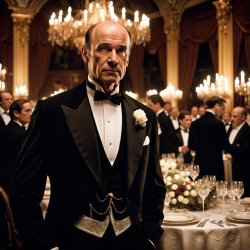 -- Ignaz Koch -- Attache of the German Consulate to Britain (N Nachrichten-Abteilung: German Naval Intelligence)
-- Ignaz Koch -- Attache of the German Consulate to Britain (N Nachrichten-Abteilung: German Naval Intelligence)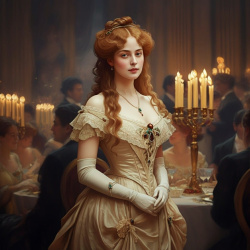 -- Mauricette Bourreau -- (Deuxième Bureau: French Second Desk - French Counter Intelligence)
-- Mauricette Bourreau -- (Deuxième Bureau: French Second Desk - French Counter Intelligence)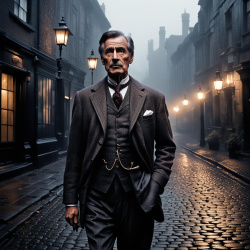 -- Earl Parish --
-- Earl Parish -- -- Konstantin Germogen Novikov (Russian Okhrana)
-- Konstantin Germogen Novikov (Russian Okhrana)
Supernaturals
Vampires
- Friedhold Prufrock -- Tremere Archaeologist (Resident)
Visiting Undead
- Collissa Montpellier -- French Daughter of Cacophony (London)
- Moira Rose -- Scotish Kiasyd Scholar (London)
- Remington Stark -- American Brujah Gunslinger (London)
- Warin Versessen -- Malkavian Agent Provocateur (London)
Widows Three
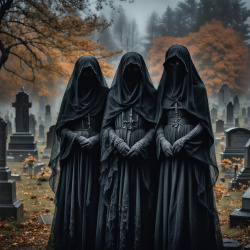 -- 3lack Widows
-- 3lack Widows
Character Creation
Stories
- A Case of Stolen Goods -- Current Story (October 1904)
Websites
https://naomh-na-tursan.livejournal.com/3782.html
https://en.wikipedia.org/wiki/Glastonbury
https://www.historic-uk.com/HistoryMagazine/DestinationsUK/Glastonbury/
https://www.worldhistory.org/article/1558/visiting-glastonbury---the-town-of-myths--legends/ ****
https://www.british-history.ac.uk/vch/som/vol9/pp6-10 *****
https://www.craiyon.com/image/wxKWw7UWT5mDWoU3VqtZ1g
https://localhistories.org/a-history-of-glastonbury/
